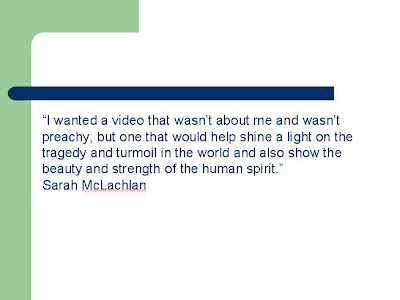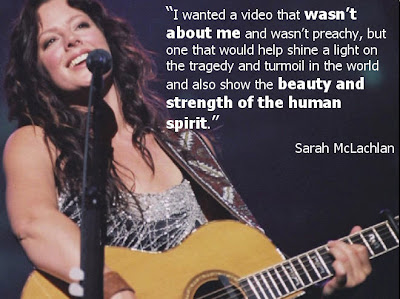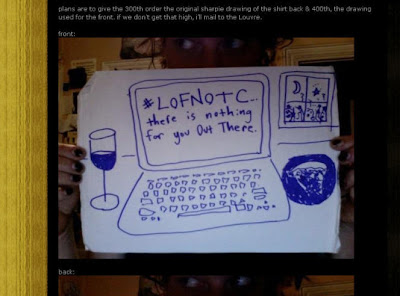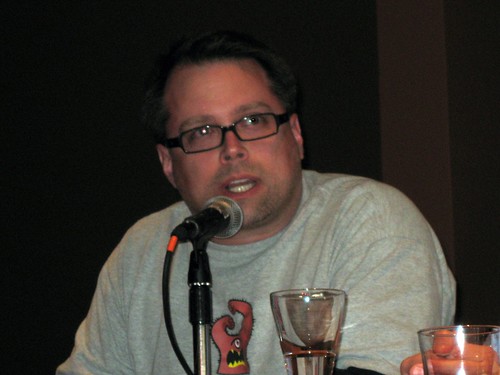
I have to admit that I was pretty damn excited about
Social South. I knew with the speakers and program that
Scott Schablow and his team were putting together that the event would be a success. But I think what happened over two days in Birmingham blew everyone away, from the attendees to the speakers, to the organizers. We had
RichardatDell and
LionelatDell together on stage for the first time ever, probably the most audience participation I've ever seen at a social media conference, and a
woman from Bahrain move an entire conference to tears with her story of how she's using social media to help others.
Before getting further into the recap, I must stress what an AMAZING job Scott and the team at
Provenance Digital Media did in planning and executing this event. Scott was literally working several hours a day on SoSo on TOP of his 'day job' at Provenance. I would often get up in the morning to see he had left me emails about SoSo sometimes as late as 3 and 4 am. He even had to cancel his session on Twitter during the event, because he simply didn't have enough time to finish preparing for it, while trying to run the event at the same time.
Jason Hill and
Stacey Hood also were wonderful about taking care of the speakers, they shuttled us all over the place, from and back to airports, to the event, to bars, everywhere. The speakers were taken better care of at this event than any I've ever spoken at. Easily.

Now as for the sessions themselves, the biggest problem I had was that there were too many good ones. At every time slot there were at least 2 sessions I really wanted to see, and usually 3. Before every slot I had to go around apologizing to speakers because I would have to miss their session. It was especially brutal in the Sat morning slots. On Friday, the crowd was honestly larger than I expected. The first session I attended was
Beth Harte's session on Social Media Planning and Measurement, and it was standing room only. I think one of the biggest takeaways was that
marketers have to prove their worth to their bosses, and this is especially true of anyone engaging in social media. Great session from Beth and I think this was exactly what many attendees wanted and needed to hear.
My session,
What Rockstars Can Teach You About Kicking Ass With Social Media was next and I won't get into it here as I'll have a full recap of the session on
MackCollier.com later. In short, I was honestly surprised at how well the session was received, I think it's the most popular presentation I've ever given, based on feedback I got from the attendees. Beth's session gave me a great lead-in crowd. Next was
Toby Bloomberg's session on Social Media, Southern Hospitality Style. I loved this session because SO many people make social media harder than it has to be. So much of being successful in social media is simply about being friendly and respectful and hospitable. Qualities that people in the Deep South have in spades. Loved Toby's analogy of the front porch conversation, and the corner grocery store.

Next came Friday's keynote, which saw RichardatDell and LionelatDell speaking together on stage, for the first time. I have to say that getting the honor to introduce Richard and Lionel as Social South's first keynote was one of the very highlights of the event for me. Richard and Lionel told a story that was probably familiar to many of the speakers (the ones that have been immersed in this space for as long as Dell has), but for the attendees, it was an invaluable look at how a huge company is using and integrating social media. And I thought what was really telling for everyone was not only what Dell has learned about social media, but what Dell has learned about their CUSTOMERS, thanks to social media. But the biggest lesson of all is, if a big online company like Dell can use social media as a way to develop individual relationships with their customers, your online company really has no excuse.

The Friday afternoon session saw us move to our 'Conversations' portion. If you've ever attended # blogchat on Twitter, then these sessions were structured as being 'live Twitter chats'. They were led by 2-3 speakers, who facilitated room-wide conversations around a particular topic. This is where the speakers at Social South really shined. The speakers had almost no coaching on this format (mainly because we didn't want it to be a presentation, we wanted it to be an open discussion), but they ran with it and made it come off flawlessly.
And this is also where I really discovered that we had some damn smart people attending Social South. Scott and Jason had told me that the audience was mostly past the Social Media 101 level, and they really were. They asked smart questions and left ME taking notes from them. This made the discussions even more rewarding for everyone.

Day Two opened with me apologizing to
David Griner,
Tom Martin, and
Paul Chaney for having to miss their talks. Seriously, there were just too many amazing speakers and sessions at Social South. But one thing I loved about the Saturday program was that
CK and
Ike Pigott were set up as a nice 1-2 punch for overcoming fears and objections to social media, and selling your boss on social media. CK's session was on the Six Demons that make companies want to fear using social media, and how to overcome those fears. At one point CK was explaining how Dell uses
Ideastorm to connect with customers, while Lionel was sitting in the front row. My first thought was that I hope that the Social South attendees appreciated how lucky they were to be seeing this. I think they did!
Next, Ike had his wonderful session on overcoming corporate objections to social media, based on Pac-Man. Wonderful analogy, and I'll just point you to
the deck on Slide Share. To complete the triple-play, CK and Ike later hosted a Roundtable on Selling Your Boss on Social Media. I think this played perfectly off the sessions that Ike and CK had delivered, and was one of the last sessions of the event, which gave attendees the right information at the right time.
But this recap would be woefully incomplete if I did not mention Esra'a Al Shafei's Saturday keynote. Esra'a was originally slated to deliver her keynote at the event, but days before Social South, she learned that the US had denied her visa to the country. So Scott and his team had to scramble to come up with an alternative, and decided to go ahead and have Esra'a do the keynote, but via Skype video.
So here we are looking at a young woman up on the screen with her headset on starting her keynote in what appears to be her room, halfway across the world. I think 'this is pretty cool!', and snap a picture on my cellphone to post on Twitter. Almost as soon as I take the pic, Scott rather forcefully interrupts Esra'a and asks the crowd to please NOT take pictures of Esra'a or take video of her presentation. He explains that Esra'a goes to great lengths to ensure that there are no pictures of her online, because many people would like to discover her true identity to stop her from doing what she is doing. Possibly even by killing her. When you suddenly realize that a person is possibly putting their life in danger to talk to you, it gets your attention.
But Esra'a's cause is one that she believes that strongly in. She detailed for the next hour or so the efforts of
Mideast Youth to use social media to draw attention to the plights and persecution of people in the Mideast and Africa that are having their human rights violated. People that are being jailed and even killed for simply questioning their government, or not practicing a 'government-approved' religion. In short, people that are being persecuted for attempting to engage in a level of freedom that we in the United States mostly take for granted. At least I know I often do. But Esra'a's story was so amazingly compelling. When she calmly stated that she knew she was putting her life in danger by speaking out and drawing attention to what certain governments were doing, and that she was not afraid and
ready to die for a cause she believed in, it truly made me appreciate the power of social media. It made me appreciate how Esra'a is not only using these tools to help others, but how these tools made it possible to hear Esra'a's story, even though people and even governments were trying to stop her voice from being heard. Tears streamed down my face and everyone else's in attendance as we gave Esra'a the standing ovation she so richly deserved.
Jason Falls has an excellent recap of her keynote, and here's where you can
learn more about what Mideast Youth is doing, and here's where you can
follow Esra'a on Twitter.
Seriously, Social South was an amazing event. If you missed #SoSo, stop kicking yourself and start planning for attending it next year. Thankfully, the response blew everyone away, and I think that's ensured there will be a Social South 2010. So to everyone I met at Social South, the speakers and attendees I reconnected with, thank you ALL for creating an amazing 2-day experience!

Pic of the Daily Fix Crew via
@treypennington
 But instead I went with this:
But instead I went with this: See the difference? And here's another tip; notice that's a LONG quote. So I bolded the key words that I wanted to focus on, and didn't read the whole quote to the audience, just pointed out the two bolded phrases.
See the difference? And here's another tip; notice that's a LONG quote. So I bolded the key words that I wanted to focus on, and didn't read the whole quote to the audience, just pointed out the two bolded phrases. If you aren't a fan of @AmandaPalmer and didn't attend my session, you probably have no idea what this slide is about, or why it's important. But if you did, this made perfect sense, as it tied into a case study I explained about how Amanda used Twitter to make $11,000.00 in two hours. But the slide alone really isn't that valuable without the explanation. This also helps people that are worried about putting their decks online for fear that someone will steal their ideas. The value of your presentation should be YOUR explanation and elaboration of the points you are trying to make with your slides. This is another reason why your slides should have fewer words, which requires YOU to better explain the points you are trying to make.
If you aren't a fan of @AmandaPalmer and didn't attend my session, you probably have no idea what this slide is about, or why it's important. But if you did, this made perfect sense, as it tied into a case study I explained about how Amanda used Twitter to make $11,000.00 in two hours. But the slide alone really isn't that valuable without the explanation. This also helps people that are worried about putting their decks online for fear that someone will steal their ideas. The value of your presentation should be YOUR explanation and elaboration of the points you are trying to make with your slides. This is another reason why your slides should have fewer words, which requires YOU to better explain the points you are trying to make.














